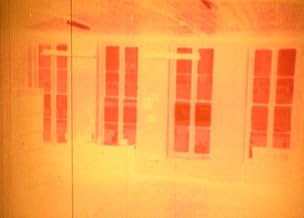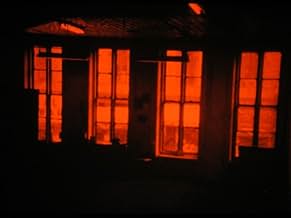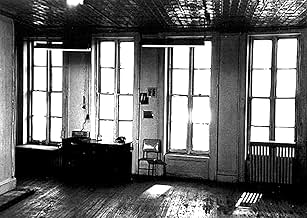अपनी भाषा में प्लॉट जोड़ेंClaimed by some to be one of the most unconventional and experimental films ever made, Wavelength is a structural film of a 45-minute long zoom in on a window over a period of a week. Very u... सभी पढ़ेंClaimed by some to be one of the most unconventional and experimental films ever made, Wavelength is a structural film of a 45-minute long zoom in on a window over a period of a week. Very unconventional and experimental, indeed.Claimed by some to be one of the most unconventional and experimental films ever made, Wavelength is a structural film of a 45-minute long zoom in on a window over a period of a week. Very unconventional and experimental, indeed.
- पुरस्कार
- कुल 1 जीत
फ़ीचर्ड समीक्षाएं
At a little under 45 minutes long, Wavelength is not an easy film to get through. It features a non-moving camera set in a large room, and nothing else. The camera captured the action that goes on in the room to create what Snow calls "a summation of my nervous system, religious inklings and aesthetic ideas." On the surface it is merely a stiff frame of three walls, a floor and a ceiling with the occasional, but brief, interaction of a human variety. But once you look closer you will realize that your eyes have deceived you.
Through the entire film, Snow has his camera zooming in at an extremely slow speed. After realizing this, your eyes will be fixated on the screen in a desperate attempt to convince yourself that you are not insane. I found the entire concept to be so emotionally exhausting and frustrating that once the film was over I could do nothing but watch it again. It was a pleasantly unpleasing experience that did nothing but expand my conception of conventional filmmaking.
I have to admit that the soundtrack behind the film was a bit confusing for me. It was nonexistent for most of the film, but all of a sudden WHAM! Imagine the most ear-piercing scream or squeal that you have ever heard. Now combine them to make the last half an hour of Wavelength. I honestly thought that I was going to disturb my neighbor's dog with the high pitched whistles and unexplainable wails that accompanied the actionless action. If you can handle the sounds you will be rewarded by the film.
With Wavelength, Snow created the most aesthetically praised work in all of avant-garde. His technique ultimately forced me into a starring contest with the screen. It was me versus the structure of a single room. It was me versus the nonexistent, but ever present, movement of the camera's lenses. I waited arrogantly for the film to flinch. It never did. And then it ended.
With Snow, there *is* a process, and it's something that could possibly make some of you sick. But first, here's what should be noted: this is not entirely an unbroken take. It is "unbroken" as far as the camera's set-up, since it isn't moving from its spot like on a dolly track and the zoom is moving at a pace a snail would go, 'catch up, man, Jesus!' But all cameras holding film need to change the reels, so every so often as Snow is zooming in on the inside of a room that has about four windows looking out over a city, with two chairs, and three pictures on the farthest wall, he does cut in with what could be called visual static. He also does some treatment to the image as far as super-imposed colors and strobes, or what may be the 1960s take on that, and then near the very end of the film (in the last two/three minutes) there is what one might call a dissolve. There may be more dissolves here, but I lost count by a certain point.
Wavelength is not frustrating to look at since every so often it'll throw in some people to look at - and sure, one of them, for no reason, drops dead (this is the experimental filmmaker Hollis Frampton making an appearance - I think, though I'm not sure, future film critic Amy Taubin shows up later on as the woman making a phone call telling someone that there's a dead man on the floor) - or even a song (the Beatles's 'Strawberry Fields Forever' is the one sliver of music to pipe in on a radio). But the audio of it is unique, and I'm not sure if it's in a way that is meant to make one curl up into a ball. It's borderline torture; think of when a tea kettle is ready and keeps on whistling - it's that, times a hundred. As the image in Snow's lens brings us inexorably, every so slowly but in that gradual way that you WILL focus on what he wants you to look at, the audio becomes ever so sharply loaded with noise. Compared to this, Lou Reed's Metal Machine Music is easy listening.
I had a different experience watching this than maybe some of you; it's available online so I hooked up my hd TV and watched it on a big screen as as I could, but I also could turn down the volume. If I saw this on 35mm in a theater with good light and good sound, I wonder if I would be more put off. But this isn't a knock against Snow exactly; I realized that the sound wasn't going to go down, so I decided to go with it. If this is the artist's process, to bring one into... well, what? I hasten to call it an 'avant-garde masterpiece', or some pretentious disaster, because I feel like/know I would need more of a critical justification. What is this TRYING to do, and does it accomplish it? Simply put: everyone who comes to this will get something out of it (for me, one part that I found compelling is how my mind might wander while looking at this shot zooming closer, and ten SNAP back into Snow's aesthetic when he messed with the image, adding color and more ferocious noise).
Maybe all you need to make a movie isn't a girl and a gun, but a single room with an interesting look and ideas that push the boundaries of what one expects to see in a motion picture. Snow may be saying, 'look at this room, look at what's going on, listen to it, and there may be things going on you didn't expect - look closer.' Or it could be a fantastical trip to do drugs to. This does move, but in such a way that creeps up on you as it creeps along. And ultimately it is... unique.
During the painfully slow zoom things happen in the room, though it's never busy or plot-driven. The highlight for me was when someone snapped on a radio and the Beatles "Strawberry Fields" played. Was that an underhanded way of saying that the film was a bad LSD trip?
Beyond the Beatles, the soundtrack consists of a long, annoying, screeching crescendo. It's awful, but try as I could, I was unable to catch a short nap during the film because of the soundtrack. For that it earns my praise. I mean, if Hollywood can't keep me awake with their drivel, then this film deserves some kind of award.
The forty-five minute long work is a single scene of a room, experimented with using various color filters, slowly and gradually zooming in to a photo on the wall of the room. Very little occurs onscreen except for the zoom, and in many ways it is really a series of film variations on the only focal point. That's not to say there is no onscreen action though; traffic can be seen occasionally moving outside the windows of the room, several women enter early on whilst a Beatles song is played, and the climax is a series of loud banging noises--as though a burglary is happening offscreen--before the great experimental filmmaker Hollis Frampton enters the shot and falls dead to the floor.
One other reviewer has interpreted that the film's goal is that to have almost nothing happen the viewer gets to appreciate more what does happen, and this is a very good point. In either case, it is a very interesting and abstract experimental work, as well as the ending which does a quite literal turn on the title, and an absolute must for fans of experimental cinema. It's boring only if you look at it as a scene of a room; it becomes interesting when you delight in the moments of action and I really liked it because it kept my interest despite the lack of events. I found that when watching it it was not a painfully boring watch like many say, because after a while you accept nothing big is going to happen and let the movie play out as it is. To be constantly bored at a movie for an entire forty-five minutes is quite unnatural, at least for me.
क्या आपको पता है
- ट्रिवियाMichael Snow has stated that his intent with the film was for it to be "a summation of my nervous system, religious inklings and aesthetic ideas."
- भाव
Woman in fur coat: I just got here, and there's a man lying on the floor, and I think he's dead.
- कनेक्शनEdited into WVLNT: Wavelength For Those Who Don't Have The Time (2003)
टॉप पसंद
विवरण
- चलने की अवधि45 मिनट
- रंग
- पक्ष अनुपात
- 1.37 : 1
इस पेज में योगदान दें


















